All over for this time.

It's being a long time between posts. The whole project came rushing to an end and I didn't post for the last section due to the work involved and other commitments.



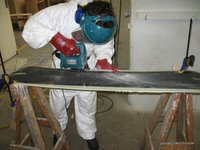




So what did we get done.
Over the break in a bit of a eureka moment I worked out how to machine the jigs as a single block. This means that it is much simpler to make them and therefore I’m planning 2 of each size. The jigs are now a 345x90mm block 100mm longer than the boards made up by laminating 90x45 pine studs. The block is mounted and machined to shape then faced with 4mm MDF to give a hard smooth surface.
Machining a new jig.
First off we machine the base and the core.
Then the base is fixed into the jig with double sided tape.
Setup ready to begin laying up. Note the breather cloth taped to the edge to help prevent the build up along the edges of extra resin.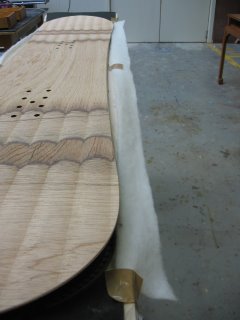
Now it's on with the protective gear and begin mixing. The resin is mixed in 2 batches to help stop exothermic reaction occurring. Each batch is 420 grams. Down from 500 in the prototype and could be less still. Maybe as little as 360.
Each layer/surface to be joined is skimmed with resin and the cloth is wetted out fully. (Completely soaked through with the resin). The base and first layer of cloth is spread first then the extra edge tape is placed onto the jig and wetted out. We used the thicken resin to fill the voids in the edges.
The cloth is split around the locating inserts and rolled down to make sure there is good wetting between base and cloth.
The core is spread with resin and the thickened resin used to locate the inserts in the core. Once in place the top of the cores is spread with resin ready to take the top glass cloth and the top sheet.
Once the position of the parts is OK each end is taped to stop it moving in the bag and the whole jig and lay up is put in the bag and vacuumed down.
Cleanup and wait until tomorrow for de-moulding.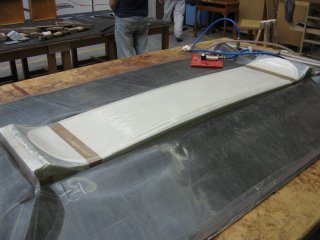
Thanks for checking in. c.



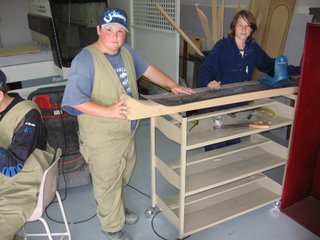
snoCAD
This is a week late. No photos from today (Monday 27 February) as I forgot to take the camera. But we have some great video that I’ll post when I get it back from the AV production guys.
This was the second group to do the designs for their boards using snoCAD. We made good progress until lunch time when there was a general testing of the rules with all but 1 of the students returning late and facing exclusion from the rest of the class. All of the students have been informed of the rules and this has being reinforced at each break. However there is always a bit of testing occurring about this time of year when the students begin to feel more comfortable in their environment and begin test the boundaries. Each time this occurs we stick to our guns, follow the procedures and adjust the lesson plan to try to catch up next class when we start off with a clean sheet.
This gets a bit disappointing because I can see that there are things that need to get done now if this whole project is to arrive where it should in September. I’ve explained this and given out a timeline but it is just toooooo far away for these guys to get.
So before all this happened the Yellow team had completed the overall designs and made the DXF files. The DXF processing takes a while so we aim to do this over lunch break. Some of the boards are looking good and I’m hoping to do some swapping about and testing of the different designs when we get to the snow. There will be only 3 different lengths but a whole bunch of other ideas going on within this.
One of the student boards based on a 153cm length.
We also made a start on the jigs. These are a female former for vacuum bagging the boards. They will be made up of 20 odd MDF profiles laminated together. Using the CNC we’ll cut them out and then glue and laminate.
Using snoCAD we designed a very thin board with the sort of profile that we want for the boards. Once the DXF file is made we discard the top half and complete the shape using Xilog+ ready for machining.
Next week we are machining the jigs. More then.
Using snoCAD for the jig.
Finally a big thanks to Dan from graf snowboards for permision to use their snoCAD software. Without this I don't think we would be able to run this project. Thanks. www.grafsnowboards.com
c.
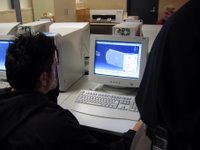 involved in modelling of some snowboard binding parts.
involved in modelling of some snowboard binding parts.